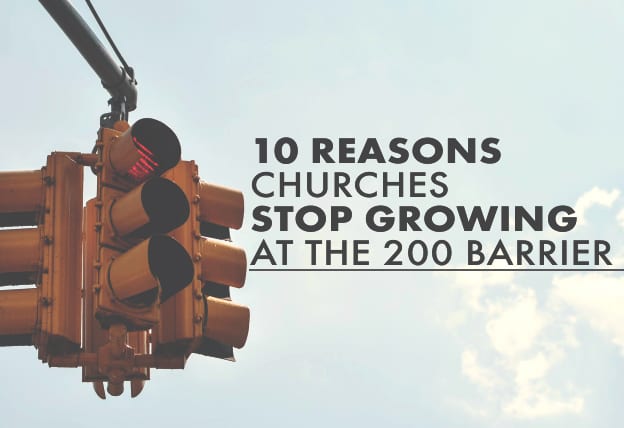It’s common for churches to hover around 200 in attendance, bouncing slightly below and slightly above that number recurrently, but not moving beyond that level. Here are some reasons that plateau happens:
- Pastoral leadership style – Pastors who must be involved in every member’s life and who don’t delegate ministry cannot shepherd a congregation larger than 200. Many pastors simply don’t know how to change this leadership style.
- Building space – Many churches build first or second buildings that will hold about 200 worshippers. If space is unavailable for future growth, that growth won’t happen.
- Church expectations – Some congregations simply don’t want to be larger than about 200. They don’t want so many members they can’t know everybody, so outreach slows as the church approaches the 200 barrier.
- Church history – In many cases, a church has a history of hitting 200, bouncing backward for a while, and then growing again up to 200. That’s been their history, so 200 has become the height of “the good old days.”
- Man-sized vision – That is, the church leaders have no vision beyond the 200 barrier. They know they can get to this point, and that becomes their target. Nobody’s thinking about God’s doing something larger than that point.
- Poor preparation – Some leaders don’t think about addressing the 200 barrier until the church is at that level – which means they’ve made no preparation to push through the barrier. Their reactive leadership halts the church’s growth.
- Ecclesiological choice – For those pastors who believe they must know every member of their congregation well, maxing attendance at about 200 is intentional. Others are church planting pastors who’ve determined that anything beyond 200 is a call to send out laborers to start another congregation.
- Burdening bureaucracy – Churches that have numerous meetings, multiple committees and slow processes often get stuck around 200. They’re not prepared structurally to cross that barrier.
- Pastoral tenure – If pastors don’t stay at their church beyond three to four years, it’s hard for the church to move past 200. Pastoral transitions tend to slow down church growth for a while.
- Poor discipleship – Moving beyond 200 requires a church to have trained layleaders to carry on the work of ministry. Churches that don’t intentionally make disciples don’t often have these workers.
What obstacles have you seen? Let us hear your thoughts.












